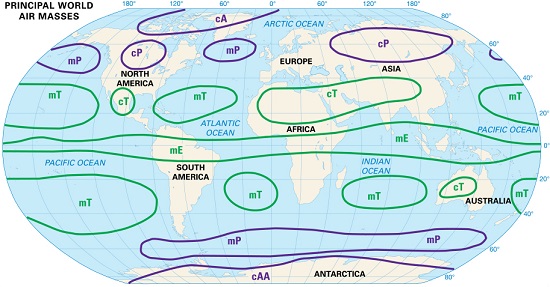Updated By: LatestGKGS Desk
Air mass Role in Climate Change

The term air mass was introduced some 70 years ago by Norwegian meteorologists from Bergen, Norway.
An air mass is a large body of air whose properties of temperature and humidity are similar in any horizontal direction.
Air masses can form in either hot or cold regions, over large land masses or water bodies.
Air masses exhibit the features of their area of origin.
Air masses are classified according to the temperature and moisture characteristics where they develop.
Classification of Air mass :
| Sr No | Symbol | Name |
| 1 | mP | Maritime Polar |
| 2 | mT | Maritime Tropical |
| 3 | cP | Continental Polar |
| 4 | cT | Continental Tropical |
| 5 | cA | Continental Arctic |
| 6 | mT | Maritime Tropical |
Boundaries between the different types of air masses are known as fronts. Different types of font produce different types of weather patterns. When a cold air pushes a warm air, it produces cold front.
The pressure differences that make wind happen are caused by differing conditions in the air behind each front. When the air from one mass travels into another, it can create a storm or other change in weather.
When two masses collide quickly into each other, it can cause a cyclone. The most severe weather usually occurs when dry-cold continental polar air clashes with warm-humid maritime tropical air.


